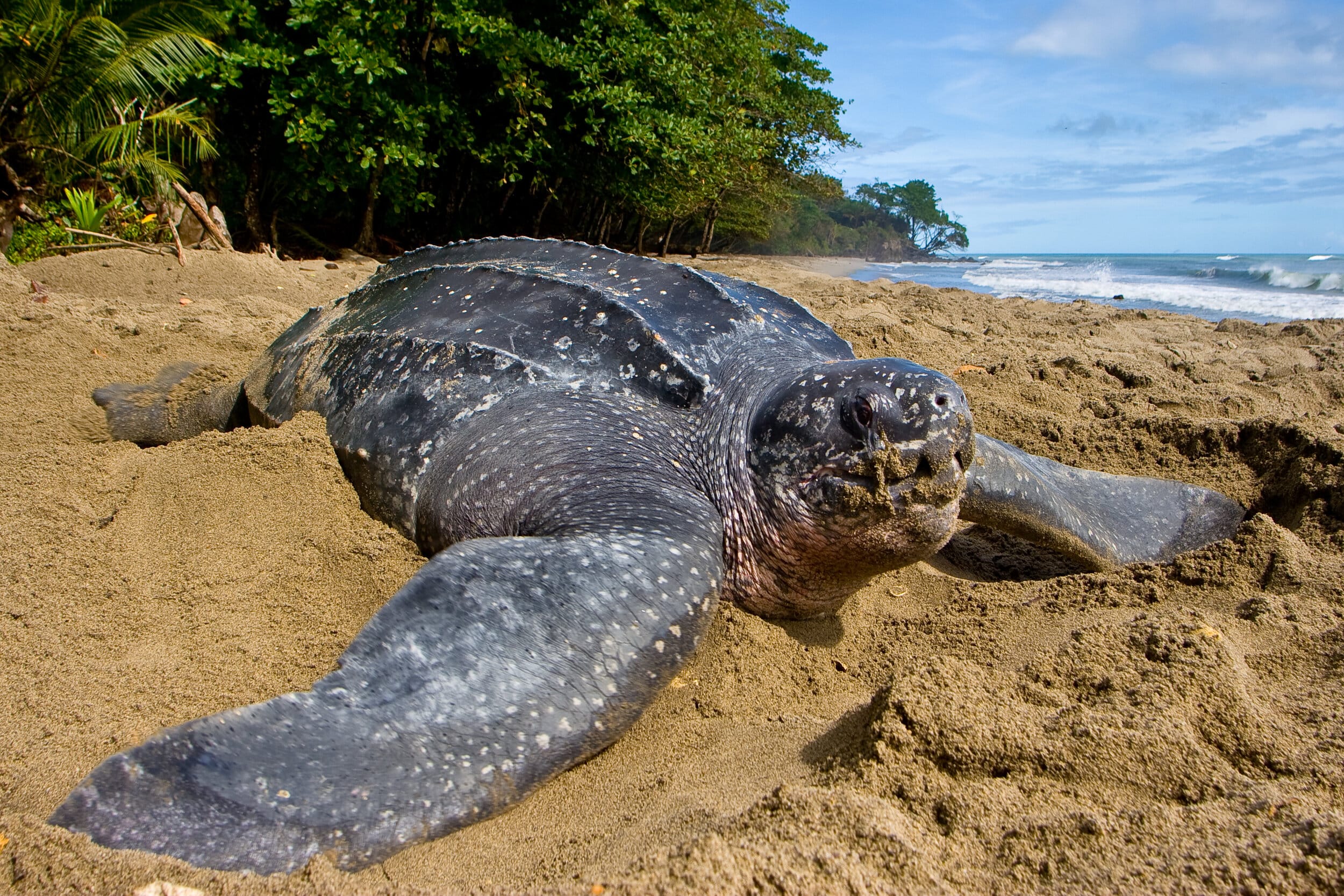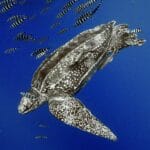Get ready to dive deep into the intriguing world of leatherback sea turtles and the secrets hiding in their mouths. Prepare to be amazed as we uncover the incredible adaptations and feeding strategies that make these gentle giants the masters of the jellyfish realm. From their massive mouths to the specially designed spiky lining in their throats, you’ll discover the fascinating anatomy that allows leatherbacks to munch on jellyfish with ease. Hold on tight as we take you on a journey through the captivating biology of these marine marvels, highlighting their evolutionary genius and the delicate balance of their ocean home.
A Mouth Built for Jellyfish
Imagine a mouth, not with teeth, but with hundreds of spiky structures, all pointing inward. That’s the reality for the leatherback sea turtle, and it’s this unique feature that allows it to thrive on a diet of slippery jellyfish.
Instead of teeth, the leatherback sea turtle has something arguably more fascinating: a mouth and throat lined with sharp, backward-pointing spikes called papillae. Picture these papillae as nature’s Velcro, perfectly designed to snag and hold onto jellyfish, their primary food source. This ingenious adaptation prevents the jellyfish from escaping and aids in swallowing, ensuring the turtle gets a good meal.
These papillae, made of a tough material called keratin (the same stuff as our fingernails!), act like a conveyor belt of spines, guiding food down the esophagus and into the stomach. Leatherbacks are experts at diving, reaching impressive depths to find their favorite snack: jellyfish. These turtles have been observed diving as deep as 4,200 feet—that’s deeper than the height of some mountains!
Not Teeth, But Just as Tough: Leatherbacks’ Specialized Mouthparts Explained
You might be surprised to learn that leatherback sea turtles don’t actually have teeth like you and I do. What they possess instead is a remarkable adaptation that’s arguably even more effective for their jellyfish-heavy diet: hundreds of sharp, pointy structures called cusps. These cusps, made of keratin just like our fingernails, line the edges of their beak and act like a serrated knife, effortlessly slicing through the slippery, gelatinous mass of a jellyfish.
But that’s not all. Imagine trying to eat a mouthful of slippery noodles – they’d be sliding out of your mouth left and right! To prevent this, leatherbacks have another trick up their sleeve – or rather, down their throat. Lining their esophagus, the tube connecting the mouth to the stomach, are rows of backward-pointing, cone-shaped spines called papillae. Picture them as hundreds of tiny teeth facing the wrong way, ensuring that once a jellyfish enters, there’s no escape!
These papillae, combined with the sharp cusps, make for a highly efficient jellyfish-catching duo. However, the process doesn’t end there. Leatherbacks also boast strong muscles in their esophagus and stomach, further crushing and breaking down the jellyfish into digestible bits. Considering they can consume a staggering 2,000 pounds of jellyfish daily, those muscles certainly have their work cut out for them!
A Look Inside: What’s in a Leatherback’s Mouth?
Now, let’s talk about what’s inside a leatherback turtle’s mouth. Picture this: instead of teeth, their mouths are lined with hundreds of spiky structures called papillae. These papillae aren’t for biting, though. Imagine them more like tiny, backward-pointing fingernails. These unique structures play a crucial role in the leatherback’s diet, which consists mainly of jellyfish.
Think about how slippery a jellyfish is – it’s like trying to hold onto a handful of water! That’s where the papillae come in. These backward-pointing spikes act like natural Velcro, trapping the jellyfish inside the turtle’s mouth. The jellyfish might think it can just slip out, but those papillae have another trick up their, well, spikes. As the leatherback’s powerful esophagus contracts, the papillae prevent the jellyfish from escaping, ensuring it goes down and gets digested.
But how does the leatherback eat the jellyfish in the first place? Imagine them using their mouths like a giant straw, sucking in water and jellyfish together. The water then cleverly escapes through the spaces between the papillae, leaving the jellyfish trapped inside, ready to be swallowed. And it doesn’t stop there! The papillae even help break down the jellyfish, making it easier for the turtle to digest.
It’s mind-blowing to think that something as simple-looking as a turtle’s mouth can be so complex and specialized. Leatherbacks are a testament to the incredible diversity and ingenuity of life on Earth. These adaptations highlight how creatures evolve amazing ways to thrive in their environments, reminding us just how much we still have to learn about the natural world.
A Diet and a Danger: The Plastic Problem
But their specialized diet also makes them vulnerable. Floating plastic bags can look a lot like jellyfish, and sadly, many leatherbacks mistake this trash for food. Ingesting plastic can be fatal for these creatures, highlighting the importance of reducing plastic pollution in our oceans.
Unveiling the Spikes: A Closer Look at Papillae
Imagine trying to eat a slippery, stinging jellyfish – it wouldn’t be very pleasant, would it? Now, picture yourself as a leatherback sea turtle, whose main dish is jellyfish! Thankfully, these amazing creatures have a built-in tool kit to handle such a prickly meal. Inside their mouths, you’ll find hundreds of tiny, pointed structures called papillae.
Think of these papillae like hundreds of tiny, backward-facing teeth lining the turtle’s mouth and throat. These aren’t teeth for chewing, though. They’re made of keratin, the same stuff that makes up our nails and hair, making them strong and pointy.
So, how do they work? Basically, the papillae act like a one-way filter. When the turtle swallows a mouthful of jellyfish and water, the papillae trap the slippery jellyfish inside its mouth, while allowing the water to pass through. This ensures the turtle gets a mouthful of food and not a mouthful of stings! This ingenious adaptation is what allows leatherback sea turtles to thrive on a diet of jellyfish, something most other creatures wouldn’t dare to try!
Ongoing Research and the Future of Leatherbacks
Comparing Mouths: Scientists are always learning by comparing different species. When we look at other sea turtles, it becomes even clearer how specialized the leatherback’s mouth is for a jellyfish diet. This type of comparison helps us understand the incredible diversity and adaptations found in nature.
Evolutionary Journey: Researchers are also curious about how the leatherback’s spiky esophagus evolved over millions of years. What were the evolutionary pressures that led to this adaptation? What are the advantages and drawbacks of having a mouth full of spines? These are questions scientists are actively trying to answer.
A Call for Conservation: The leatherback sea turtle faces many threats, from plastic pollution to getting caught in fishing gear. By raising awareness about these magnificent creatures and supporting conservation efforts, we can all play a part in protecting them for future generations.
People’s Statements:
“The leatherback’s mouth is a marvel of nature, a testament to the incredible diversity of life in our oceans.” – Dr. Sarah Nelms, marine biologist.
Unveiling the awe-inspiring adaptations of the leatherback sea turtle, specifically its leatherback mouth, will leave you in awe of nature’s ingenuity.
Meet Laura Bridgman, a remarkable figure who defied the odds and became an inspiration for those with sensory impairments. Her story will undoubtedly move your heart. laura bridgman













2 thoughts on “Inside the Leatherback Sea Turtle Mouth: A Spiky, Jellyfish-Devouring Machine”
Comments are closed.